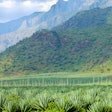A severe drought in Mexico has cost farmers $1.18 billion in lost harvests, killed 60,000 head of cattle and weakened 2 million more livestock, pushing up food prices and causing the country’s government to allot $2.65 billion in emergency aid to help offset the damage, according to reports.
The overall cost to Latin America’s second-largest economy from the worst drought in Mexico’s history is still being calculated, as the ramifications are expected to worsen, according to the government. “Droughts are cyclical — we know that — but they are growing more frequent and severe due to climate change,” said Elvira Quesada, the minister for the environment and natural resources. Poor weather destroyed 7.5 million acres of cultivatable land in 2011, according to Mexico’s agricultural association. That number helped increase the country’s food imports by 35 percent, a trend likely to continue through the 2012–2013 crop cycle.
Experts are predicting that Mexico will have to spend billions of dollars in the next two decades to maintain an adequate water supply for irrigation and drinking water, as climate change continues to make conditions challenging. More than 400,000 residents in the six driest states were without water at the end of December, with reservoirs in two states half-empty and another two less than a quarter full. “We’re at the point of no return,” said Ignacio Becerra, a local priest. “The northern part of the country is drying out. If the rains don’t come, the situation is going to be worse than serious. It will be a disaster.”
Summer rains typically break the winter dry spell but water authority Conagua expects March rainfall to be half of normal years and it does not see a break to the crisis before July.


















